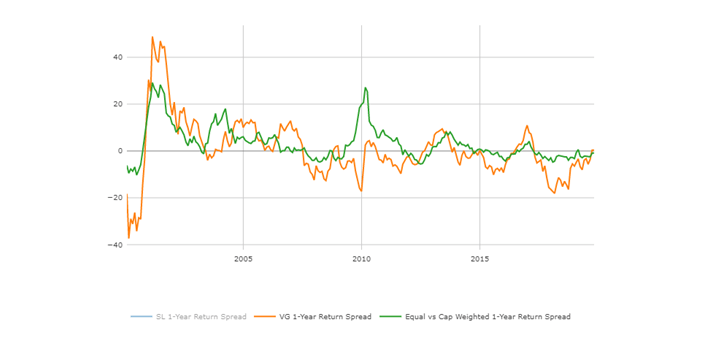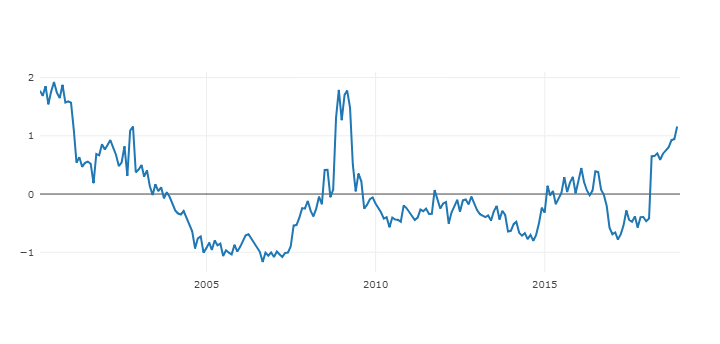US Economics and COVID
With 130 million vaccine doses administered in the US and 14% of population fully vaccinated, the re-opening of the economy looks more certain. The US economy also received a $1.9 trillion shot in the arm, helping millions of Americans jobless or underemployed, suffering from a severe loss of income, and unable to meet rent or mortgage payments. Both developments will allow for a broader economic expansion going forward, with some areas like the industrial and consumer sectors improving as we speak.
The GDP growth consensus is moving higher. Usually pretty conservative in its forecast, Goldman Sachs upped the growth rate to 8% for the year and unemployment rate to drop to 4% at the end of 2021. Even with more liquidity infusions administered by the Federal Reserve and pent-up demand on the consumer side, one should expect inflation dynamics to mirror those last cycle. Inflation is coming off low levels and even if core PCE inflation reaches 2.1% in 2023, that should not be detrimental to overall economic growth and would not force the Fed to shift the course of keeping low short-term interest rates.
Global Economics
JP Morgan cites divergence as the hallmark of the current quarter. While recent reports highlight a sharp decline in global retail spending, factory output and goods trade continue to expand at a robust pace. COVID-19 dynamics have also diverged with positive news on case counts and the rollout of vaccinations in the US and UK contrasting with rising concerns in continental Europe and a number of EM economies. On inflation, there is pressure in commodities and core goods prices that contrasts with still-depressed service price inflation. Despite all the divergence, there are multiple reasons for the current optimistic outlook:
- Vaccines do work. Israel and the UK—economies with the highest share of the population receiving vaccinations—are rapidly containing the pandemic. The successful rollout of vaccines has enabled Israel to emerge out of a third lockdown.
- Consumption and Factory output are on the rise. The resiliency of global factory output this quarter speaks to underlying strength in global business spending as well as the continued recovery in stock-building. This is being reinforced by an impressive rise in the latest business sentiment readings.
- A consistent message emerged from the developed market central banks meetings this month: they intend to retain current levels of accommodation for some time further even as they raise their sights on growth and inflation. They are willing to respond more slowly to growth and inflation as they facilitate a recovery with minimal scarring and restore inflation expectations by encouraging inflation overshoots.
Stock Market
If I asked you a year ago where you thought we were heading, I bet, I would not get an accurate answer. After the market hit the bottom on March 22, it feels like it never looked back. On top of this, we have experienced one of the strongest rotations out of Large Growers into Small and Value. The unprecedented liquidity is about to hit the market as well (provoked by the stimulus, Fed buying asset program) and there is an infrastructure $3 trillion program looming as well. Vaccinations make re-opening of the economy easier.
And yet, there are concerns that the overall market is expensive. In aggregate it is not cheap. However, as we recently added to asset classes that have trailed for a long time into our actively managed portfolios and allocations, we should only look forward to the future. Although the rotation has been strong, we are not there yet, in terms of historic norms (see the charts below). Again, we think reasonably priced technology and communications will appreciate – it is the overpriced group with unsustainable projections which keeps getting hurt. So, we are not anti-Growers – we are pro Growers with high probability of meeting the high growth expectations. We are not blindly for Value. We favor companies with sustainable and growing long-term Cash Flows and Profit Margins, which were put in doubt by the uncertainty around first Trade War and then the Pandemic. The historic cycles suggest that this rotation could take a few years not at the expense of IT and Communications (which could plateau a bit) but because normalization and unwinding huge personal savings levels will take some reactive time.
Timing rotations is as hard as timing the market. In the short run, some people will always express regret of not guessing the latest trend. It is essential not to become regretful or euphoric, but to stay the course in a disciplined approach no matter whether this is an actively managed strategy or a passive allocation. Chasing old trends is as much of a losers’ game as timing the market.
With economic growth projections hovering in the range of 6% – 8% this year and huge liquidity mentioned above we expect inflation to kick in (the Fed is ok with inflation going above 2%). Stocks usually do well when inflation is rising from the low levels. Real assets, which we added to our allocations, also serve as a natural hedge against inflation. We will continue adjusting our postures to address the changing environment.
Valuation Spreads (Source – Signet FM): through February 2021

Equal vs. Market Weighted 1 Yr. Return Spread (Source – Signet FM): through February 2021

Large vs. Small and Growth vs. Value 2020 YTD (as of 03/24/2021) (Source – Signet FM):

Factor Performance (Top 2 quintiles of Large Cap Universe vs. SP 500) (Source – Signet FM):

The information and opinions included in this document are for background purposes only, are not intended to be full or complete, and should not be viewed as an indication of future results. The information sources used in this letter are: WSJ.com, Jeremy Siegel, PhD (Jeremysiegel.com), Goldman Sachs, JP Morgan, Empirical Research Partners, Value Line, Ned Davis Research, First Trust, Citi research and Nuveen.
| IMPORTANT DISCLOSURE:
Past performance may not be indicative of future results. Different types of investments and investment strategies involve varying degrees of risk, and there can be no assurance that their future performance will be profitable, equal any corresponding indicated historical performance level(s), be suitable for your portfolio or individual situation, or prove successful. The statements made in this newsletter are, to the best of our ability and knowledge, accurate as of the date they were originally made. But due to various factors, including changing market conditions and/or applicable laws, the content may in the future no longer be reflective of current opinions or positions. Any forward-looking statements, information and opinions including descriptions of anticipated market changes and expectations of future activity contained in this newsletter are based upon reasonable estimates and assumptions. However, they are inherently uncertain and actual events or results may differ materially from those reflected in the newsletter. Nothing in this newsletter serves as the receipt of, or as a substitute for, personalized investment advice. Please remember to contact Signet Financial Management, LLC, if there are any changes in your personal or financial situation or investment objectives for the purpose of reviewing our previous recommendations and/or services. No portion of the newsletter content should be construed as legal, tax, or accounting advice. A copy of Signet Financial Management, LLC’s current written disclosure statements discussing our advisory services, fees, investment advisory personnel and operations are available upon request. |




























































































